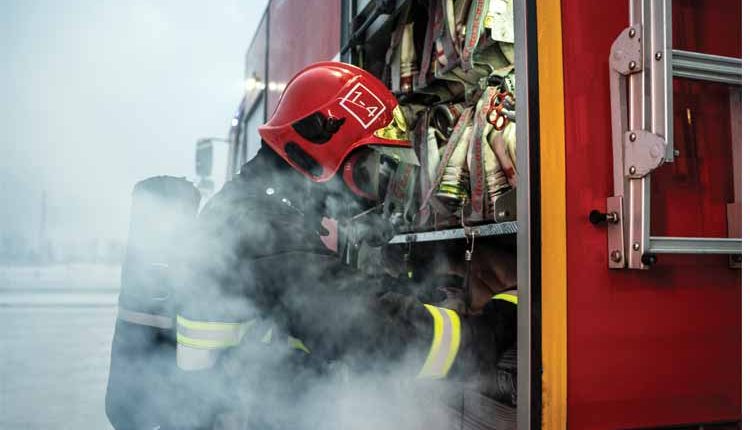The fire industry, crucial for safeguarding lives and property, continually evolves to meet modern challenges. From technological advancements to sustainable practices, several trends shape its landscape. This article delves into emerging trends revolutionizing the fire industry, emphasizing innovation, safety, and sustainability.
Smart Technologies
Integration of smart technologies like IoT (Internet of Things) and AI (Artificial Intelligence) redefines fire safety. Smart detectors equipped with sensors detect smoke, heat, or gas anomalies, enabling swift response and minimizing false alarms. AI algorithms analyze data patterns to predict potential fire risks, enhancing preemptive measures. Additionally, IoT-enabled systems offer remote monitoring and control, enhancing operational efficiency and reducing response times.
Fire-Resistant Materials
Innovative materials play a pivotal role in fire prevention and mitigation. Advancements in fire-resistant fabrics, coatings, and building materials enhance structural integrity and inhibit fire spread. Nanotechnology-based coatings provide superior flame retardancy, while eco-friendly alternatives promote sustainability without compromising safety standards. Integrating such materials in infrastructure construction fosters resilient communities and minimizes fire-related damages.
Fire Resistant Cables & Wires
Innovations in fire retardant cables and wires have been pivotal in enhancing fire safety in various industries, particularly in buildings, transportation, and infrastructure. Some notable advancements include:
Halogen-Free Materials: Traditional cables and wires often contain halogen-based materials, which release toxic gases and smoke when exposed to fire. Innovations focus on halogen-free alternatives, such as polymers and compounds, to reduce smoke emission and toxicity levels. These materials improve evacuation conditions and minimize health risks during fire incidents.
Intumescent Coatings: Intumescent coatings are applied to cables and wires to provide fire protection by swelling and forming an insulating char layer when exposed to high temperatures. Recent innovations in intumescent coatings enhance their effectiveness in preventing flame propagation and maintaining electrical integrity during fire events. These coatings improve fire resistance and prolong cable functionality in critical applications.
Self-Extinguishing Properties: Advancements in polymer chemistry and additives enable cables and wires to possess self-extinguishing properties. These materials extinguish flames upon removal of the ignition source, preventing fire spread and minimizing damage. Self-extinguishing cables are particularly beneficial in confined spaces and high-risk environments where fire containment is paramount.
Low Smoke and Low Toxicity (LSZH) Formulations: Low smoke and low toxicity (LSZH) cables and wires are engineered to emit minimal smoke and toxic gases when exposed to fire. Innovations in LSZH formulations enhance flame retardancy while reducing environmental impact and health hazards. These cables are widely used in public buildings, transportation systems, and industrial settings to improve occupant safety and comply with stringent regulations.
Enhanced Thermal Stability: Materials with enhanced thermal stability are integrated into cables and wires to withstand elevated temperatures without compromising electrical performance. Innovations in heat-resistant polymers and insulating materials improve cable insulation and maintain signal integrity during fire incidents. Enhanced thermal stability ensures uninterrupted power transmission and communication networks critical for emergency response operations.
Advanced Fire Testing Standards: Innovations in fire testing standards and protocols ensure rigorous evaluation of fire retardant cables and wires. Standardized tests assess fire resistance, flame propagation, smoke emission, and toxicity levels to validate performance under simulated fire conditions. Adherence to stringent standards enables manufacturers to deliver reliable and compliant products that meet regulatory requirements and industry specifications.
Overall, innovations in fire retardant cables and wires prioritize safety, reliability, and sustainability, offering effective solutions to mitigate fire risks and enhance fire safety in diverse applications. Continued research and development efforts drive further advancements in materials, manufacturing processes, and testing methodologies to address evolving fire protection needs across industries.
Training and Simulation
Simulation-based training emerges as a cornerstone in firefighter education and preparedness. Virtual reality (VR) and augmented reality (AR) simulations replicate real-life scenarios, offering immersive training experiences. Firefighters can practice various firefighting techniques, decision-making skills, and teamwork in safe and controlled environments. These simulations enhance proficiency, situational awareness, and risk management capabilities, ultimately saving lives during emergencies.
Sustainable Practices
Embracing sustainability principles is imperative for the fire industry’s long-term viability. Adoption of eco-friendly firefighting foams, alternative energy sources, and green building standards reduces environmental impact while maintaining operational effectiveness. Furthermore, recycling initiatives for fire suppression equipment and water conservation measures promote resource efficiency. Sustainable practices not only mitigate ecological footprints but also align with corporate social responsibility objectives.
Data-Driven Insights
Harnessing big data analytics revolutionizes fire prevention strategies and incident management. Data analytics platforms process vast datasets from various sources, including sensors, social media, and historical records. Predictive analytics models identify high-risk areas, enabling targeted interventions and resource allocation. Real-time data streams facilitate dynamic incident response, optimizing resource utilization and enhancing situational awareness for decision-makers.
Conclusion
The fire industry’s evolution is driven by innovation, safety, and sustainability imperatives. Embracing smart technologies, fire-resistant materials, and sustainable practices enhances resilience against fire hazards while minimizing environmental impacts. Furthermore, prioritizing training and leveraging data-driven insights empower firefighters to effectively combat emergencies. By staying abreast of emerging trends and fostering collaboration, the fire industry continues to safeguard communities and assets worldwide.

